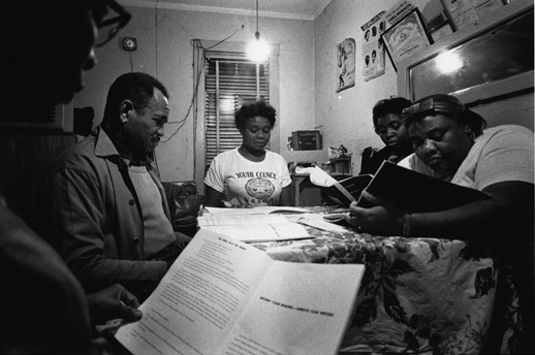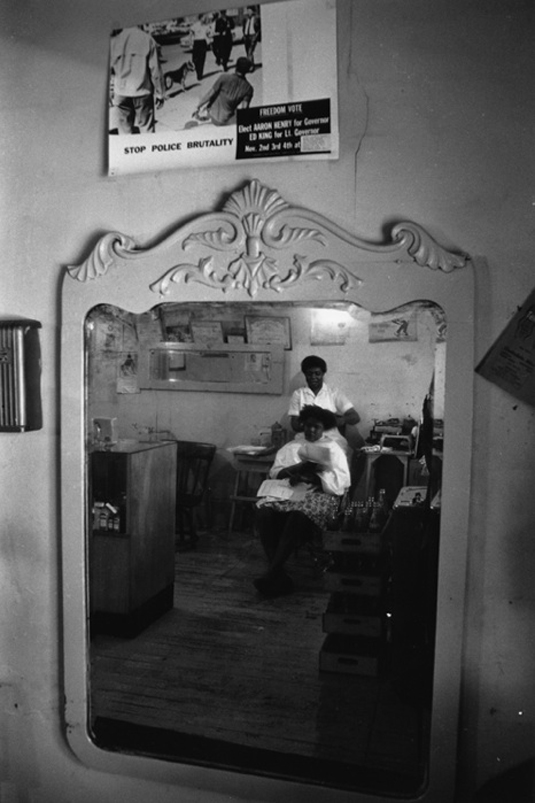
Good Morning POU!
There were many “silent” leaders of the Civil Rights Movement. Everyday people were the backbone of the struggle. Many women in small rural communities were undercover leaders because they began to incorporate furthering the message of the movement in their every day jobs. Beauticians would begin to tell their customers the necessary information needed to pass the voter registration test, all while styling their hair. Women in the community also began having bake sales and fish fries to raise money for the students who were arrested while protesting for equal rights and to provide alternative transportation until the bus system became completely equal.
This is a 1964 image of Mississippi beautician Vera Piggy styling hair and educating her customers on voter registration.

This image, taken by Charles Moore in 1964, is of Vera styling a woman’s hair while educating her on how to register to vote in 1964.

Most women in the movement were not well-known — then or now, said Katherine J. Kennedy, director of Boston University’s Howard Thurman Center, which organizes human rights programs on campus.
Most were “volunteers — women in the churches who cooked the meals and made sure all the preparations were made, the ones who cleaned up after the rallies and got ready for the next one,” Kennedy said. “Most women who are sincerely interested in making a difference are not looking for the publicity for it. … Making a true difference doesn’t always come with fanfare.”
Even today, Julian Bond said most NAACP members and most local branch presidents are women.
“There’s a Chinese saying, ’Women hold up half the world,”’ Bond said. “In the case of the civil rights movement it’s probably three-quarters of the world.”
